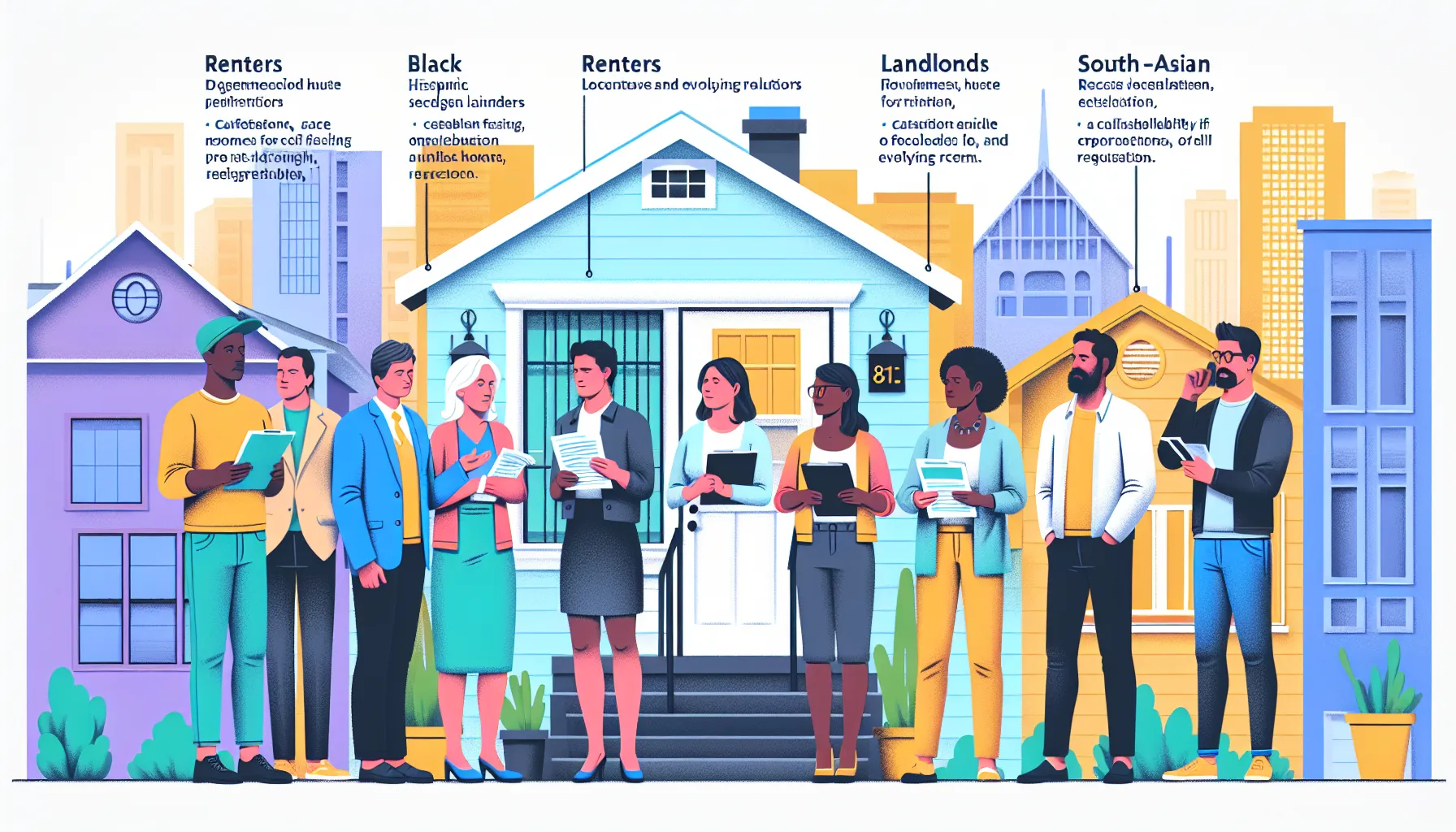Key Takeaways
- Orinda’s rental housing demand remains high due to top-rated schools, safe neighborhoods, and easy access to San Francisco and the East Bay.
- Limited housing inventory and low vacancy rates drive competitive rental pricing and frequent bidding among renters.
- Single-family homes and condos near transit or schools are especially sought after, catering to both families and professionals.
- Landlords benefit from quick turnovers and reliable returns, while renters face challenges securing desired properties and rising rental costs.
- Regulatory and zoning considerations add complexity for both renters and property owners, impacting leasing options and requirements.
- Ongoing population growth, stable employment opportunities, and quality local amenities point to sustained strong demand through 2025 and beyond.
Orinda’s rental housing market has been catching my eye lately. With its peaceful neighborhoods and top-rated schools, it’s no wonder so many people want to call this area home. Families and professionals alike are searching for rentals, hoping to enjoy the blend of small-town charm and easy access to San Francisco.
Have you noticed more people asking about rentals in Orinda? I often hear from folks who’ve moved away but want to keep their investment here, as well as investors managing several properties. What’s driving this growing interest? Let’s take a closer look at what’s shaping demand in Orinda and what it could mean for renters and property owners alike.
Overview Of Orinda Rental Housing Demand
Rental housing in Orinda continues to attract steady interest. Families often choose this area for its strong school system and safe neighborhoods. Professionals appreciate the easy access to major business centers in the East Bay. Each year, more inquiries come in from people moving into Orinda for work or education, as well as from former residents who want to keep their foothold in the region’s real estate market.
From my experience, investors see value in holding properties here due to an active leasing market and reliable returns. For comparison, similar communities in the East Bay show less turnover, but Orinda’s mix of consistent demand and limited inventory drives competitive pricing for available homes.
Are you seeing demand for certain property types rise? For example, single-family homes usually go fast due to their yard space and privacy, while condos fill quickly when located near transit or schools. Housing market trends show that, within the last year, available rental listings remain low, leading to a higher number of applicants for each property.
People often mention the peace of mind that comes from stable local employment and community amenities. Have you noticed more requests for homes near parks, schools, or transit? Those preferences shape which listings attract attention first. Would you like to learn how specific features influence interest levels in different neighborhoods?
Property owners benefit when demand outpaces supply, leading to fewer vacancies and less time spent waiting for qualified tenants. Renters, on the other hand, often face competition, especially for homes in Orinda’s most desirable districts. How do your goals as a renter or owner align with these market movements?
Key Factors Driving Demand In Orinda

Orinda’s rental market experiences strong demand thanks to several important local drivers. Let’s look closer at what shapes housing needs and attracts new residents. Are you seeing any of these factors at play in your search or investment plans?
Population Growth And Demographic Shifts
Population increase and changes in who’s moving to Orinda continue to fuel the rental market. Many families and professionals choose Orinda to take advantage of acclaimed schools and quiet neighborhoods. Young couples often target condos near transit, while families seek single-family homes that offer private yards and space. Over recent years, demand from both local movers and newcomers has outpaced available rentals. Have you noticed properties filling quickly or renters acting fast when a listing pops up?
Local Employment And Economic Trends
Economic stability and job growth around Orinda help sustain high demand for rentals. Commuters benefit from proximity to East Bay business centers, including San Francisco and Oakland, making daily travel easier for those working in tech, healthcare, or education. Strong local job markets mean many renters feel confident about their ability to commit to longer leases. The area attracts well-qualified tenants whose priorities focus on access, quality of life, and investment in future opportunities. How does your career influence your housing decisions or what you offer as a landlord?
Current Rental Market Trends In Orinda

I see Orinda’s rental housing market staying active, with more families and professionals searching for homes here each month. People value the safety, school quality, and peaceful neighborhoods, which keeps demand steady. Have you noticed competition as you search for a rental, or wondered what factors influence prices in your neighborhood?
Vacancy Rates And Rental Prices
Vacancy rates in Orinda remain low, often under 3%, especially for single-family homes and properties close to top schools. This limited availability drives prices higher and shortens listing times. As of early 2024, typical monthly rents for a three-bedroom home range from $4,200 to $5,000, depending on location and amenities. Condos or apartments near transit hubs see rents between $2,700 and $3,600. Homes rarely sit on the market longer than two weeks. Owners benefit from strong pricing while renters frequently face competing applications.
Here’s a snapshot of current rental figures:
| Property Type | Typical Rent (Monthly) | Average Vacancy Rate |
|---|---|---|
| Single-family home | $4,200 – $5,000 | <3% |
| Condo/Apartment (2BR) | $2,700 – $3,600 | <3% |
Have you experienced quick application deadlines or bid higher to secure a property? Many renters share similar stories, especially during peak moving seasons.
Popular Neighborhoods For Renters
Orinda’s most sought-after neighborhoods include those close to top-ranking schools and transit options. Areas such as Sleepy Hollow, Glorietta, and Ivy Drive attract families due to their walkability to elementary and middle schools. Some renters prefer neighborhoods near the BART station or downtown Orinda, making commutes easier and local shopping accessible.
Families often prioritize yard space and privacy found in sections like Del Rey or Orinda Woods, while professionals lean toward convenience in downtown districts. Each area offers options with varying price points and housing styles, which lets renters select what matches their lifestyle.
Which features matter most to you when searching for a home? Location, space, and nearby amenities often guide these choices, shaping how quickly properties lease. If you’re looking for specific criteria, understanding neighborhood demand could help you act quickly and find the right fit.
Challenges Facing Renters And Landlords

Both renters and landlords in Orinda face real challenges as they try to meet their needs in this active rental housing market. These obstacles often shape decisions and expectations for everyone involved. Have you found yourself frustrated by searching for housing or dealing with new regulations in Orinda?
Limited Housing Inventory
Limited housing inventory affects rental experiences for both renters and landlords. Demand often exceeds the number of available homes, which means renters sometimes compete with several other applicants for one property. Waitlists grow long, making it difficult for families or professionals who want to move quickly. For landlords, finding tenants might seem easier, but limited supply brings higher expectations from applicants who pay premium rates—in 2024, asking rents for three-bedroom homes range from $4,200 to $5,000, and condos near transit rent between $2,700 and $3,600. Do you ever wonder how quickly you could secure the right home or tenant in this kind of environment?
Regulatory And Zoning Considerations
Orinda’s regulatory and zoning considerations add another layer of challenge for both groups. Renters need to understand which properties qualify for rental use since single-family zoning and rental restrictions vary across neighborhoods like Sleepy Hollow or Ivy Drive. Landlords must stay updated about shifting local ordinances, rent control measures, and maintenance inspection requirements. Each rule introduces more paperwork and potential costs, as well as occasional delays in leasing or improvements. How often have changing rules caught you off guard during your search or ownership experience?
Future Outlook For Orinda Rental Housing Demand

Forecasts suggest rental demand in Orinda will remain strong through 2025. Single-family homes stand out for families prioritizing privacy and schools, while condos by transit attract professionals. Rising home prices may keep many renting longer, especially younger adults delaying purchases. Interest from out-of-area investors points to continued competition for available properties.
Population projections for Contra Costa County show modest growth, supporting stable housing needs in Orinda. School enrollment trends signal ongoing demand, with families drawn to high-performing districts. Employment opportunities in East Bay tech and healthcare sectors keep commuters looking for homes near BART and major highways. Have you noticed how many renters now prioritize proximity to transit and top-rated schools?
Seasonal data since 2021 highlight low vacancy rates—frequently under 3%—and rent increases each spring. Many landlords report quick turnover and multiple applicants per listing. Rental prices for three-bedroom homes have held above $4,200, with desirable locations fetching even higher rates. Are you considering expanding your investment portfolio or holding your Orinda property longer?
Regulatory changes sometimes impact owner decisions, particularly regarding short-term rental bans or rent control proposals. Owners weighing long-term investment versus sale often review market signals and tenant quality. Renters seeking stability appreciate clear lease terms and responsive management. What features matter most when you evaluate potential rentals or tenants?
Shifting demographics mean more professionals working partly remote seek Orinda rentals offering outdoor space and flexible layouts. Current trends suggest continuous demand for well-maintained properties in areas with access to schools, parks, and transit. Investors and homeowners receive steady interest from a qualified pool of tenants, pointing to a resilient local market moving forward.
Conclusion
Orinda’s rental housing scene continues to evolve with impressive resilience. I’ve watched how steady demand and limited inventory create a dynamic environment for both renters and landlords. Navigating this market means staying informed and adaptable as trends shift and new regulations emerge.
If you’re considering making a move or investing in Orinda, it’s smart to act quickly and stay alert to changing opportunities. The city’s appeal isn’t fading anytime soon, and I’m confident that well-prepared renters and property owners can both find success in this competitive landscape.
Frequently Asked Questions
Why is Orinda’s rental market experiencing high demand?
Orinda’s rental market is seeing high demand due to its excellent schools, safe neighborhoods, and convenient access to East Bay business centers. These factors attract families and professionals seeking quality of life and easy commutes.
What types of rental properties are most popular in Orinda?
Single-family homes with yard space and privacy are highly sought after, especially by families. Condos and apartments near transit hubs or top schools are also in high demand among professionals and commuters.
How competitive is it to find a rental in Orinda?
Finding a rental in Orinda is very competitive due to limited inventory and high demand. Renters often face multiple applicants per listing and may need to act quickly, especially for homes in desirable neighborhoods.
What are average rent prices in Orinda as of 2024?
As of early 2024, typical monthly rents for three-bedroom homes range from $4,200 to $5,000. Condos or apartments near transit hubs usually rent for $2,700 to $3,600 per month.
Which Orinda neighborhoods are best for renters?
Popular neighborhoods for renters include Sleepy Hollow, Glorietta, and Ivy Drive, known for walkability to schools. Areas near the BART station are also favored for convenient commutes.
Are vacancy rates low in Orinda’s rental market?
Yes, vacancy rates are typically very low, often under 3%. Homes near top schools and single-family properties have especially strong demand, leading to quick turnovers.
What challenges do renters face in Orinda?
Renters face challenges such as limited inventory, high competition, and premium rent prices. Long waitlists and strict application requirements are common due to high demand.
What should landlords know about renting out property in Orinda?
Landlords benefit from strong demand but must meet high tenant expectations. Local regulations, changing ordinances, and maintenance requirements add complexity to property management.
Is rental demand expected to stay strong in Orinda?
Yes, forecasts indicate rental demand will remain strong through 2025 due to population growth, stable school enrollments, and job opportunities in East Bay industries.
How do local regulations affect Orinda’s rental market?
Orinda’s rental market is influenced by zoning, short-term rental bans, and possible rent control proposals. These regulations can impact both tenants’ qualifications and landlords’ investment decisions.
